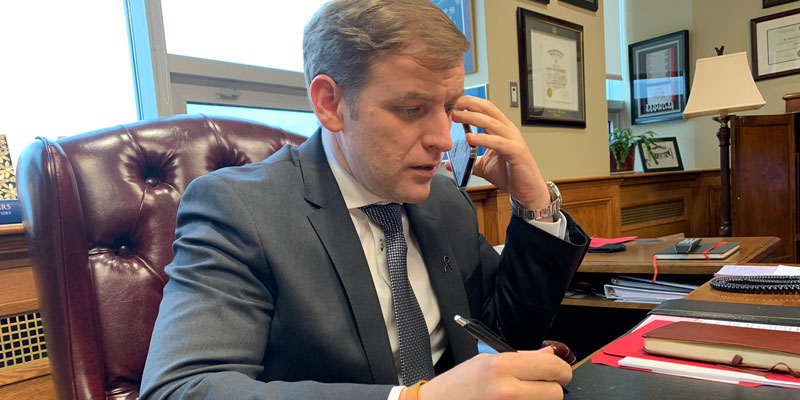Furey government must reduce spending to right fiscal ship

In the wake of the recent budget, Premier Andrew Furey and his government remain in a fiscal mess. Newfoundland and Labrador has the highest per-person debt burden in Canada and the budget deficit stands at $825 million (the second-largest in Canada, as a share of the economy). Moreover, the fiscal path ahead remains laden with risk.
For example, small fluctuations in the interest charges on public debt could further damage the province’s fiscal position. The province is also relying on transfers from Ottawa and rebounding oil prices to close its budget gap. The government doesn’t plan to balance its budget until 2026/27, and even small changes in any of these factors could throw that plan off course.
If the province’s fiscal situation does not improve, change may be forced from outside (remember when then-premier Dwight Ball wrote to Prime Minister Trudeau explaining the province was running out of cash as bond markets were not willing to finance additional provincial debt). But Newfoundland and Labrador has an opportunity to fix its own problems and create a more prosperous future. In fact, provinces have successfully extricated themselves from the grips of persistent deficits and unsustainable debt before. What lessons might be available from these prior cases?
In the 1990s, Saskatchewan faced a debt and deficit crisis of similar proportions. Saskatchewan’s deficits peaked at 6.8 per cent of the economy (GDP) while Newfoundland and Labrador’s deficit last year was 5.2 per cent. Saskatchewan also faced the prospect of bond markets refusing to finance new debt or even refinance existing debt coming due.
But in only three years, Saskatchewan balanced its budget and reduced its debt burden. Over the course of a decade, its debt burden (as measured by debt to GDP ratio) had been halved and the province’s fiscal health was greatly improved. The key? First and foremost, the NDP government at the time reviewed all government spending, focusing on the core competencies of government and what could be best left to the private sector.
Saskatchewan reduced spending including government compensation. Per-person spending was reduced from $9,098 in 1992-93 to $6,963 in 1996-97. This was the key reason the province was able to turn a $1.53-billion deficit into a $184-million surplus in short order.
Of course, the spending reductions were difficult, but they helped save Saskatchewan from more difficult decisions had the province’s finances continued to deteriorate. In the end, residents benefitted from a province in better fiscal condition, which contributed to a more prosperous economy and laid the foundation for tax relief and reform.
Spending also happens to be where the Furey government must correct course. The recent budget continued a string of annual spending increases, which is the primary reason for the province’s persistent deficits and rising debt. Newfoundland and Labrador’s fiscal challenges may seem insurmountable. The success of other provincial fiscal recoveries proves they’re not.
Authors:
Subscribe to the Fraser Institute
Get the latest news from the Fraser Institute on the latest research studies, news and events.


